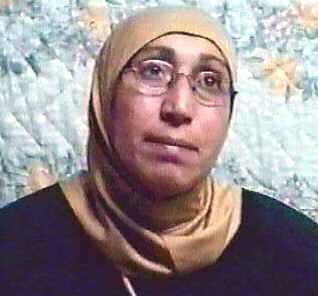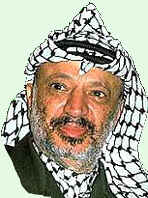1894 The US Congress passes the US's first graduated income
tax law, which is ruled unconstitutional the next year.
1891 Thomas Edison files a patent for the motion picture camera.
1863 Siege of Fort Wagner, Charleston Harbor, South Carolina continues
1862 C.S.S. Alabama
is commissioned ^top^
The C.S.S. Alabama was
commissioned at sea off Portugal's Azore Islands, beginning
an illustrious career that would see over sixty Union merchant
vessels sunk or destroyed by the Confederate raider. Built in
secrecy for the Confederacy in Liverpool shipyards, the construction
of the Alabama was uncovered by the Union, creating a
significant diplomatic crisis between the US government and
Britain. Nevertheless, the ship set off into the open seas captained
by Confederate Raphael Semmes and manned by an international
crew in which Southerners were the minority. Leaving sunk US
merchant ships in its wake, the Alabama cruised the Atlantic,
rounded Africa, and visited Southeast Asia, before redoubling
the Cape of Good Hope back to Europe.
On 11 June 1864, the Alabama
arrived at Cherbourg, and Captain Semmes requested permission
to dock and repair his ship. The US sloop-of-war Kearsarge,
which had been pursuing the Alabama, arrived three days
later and waited outside of the harbor. On 19 June, the Alabama
sailed out to meet its foe. However, unlike the sixty-odd merchant
ships that the Confederate raider had sunk during its two-year
rampage, the Kearsarge was prepared. After an initial
exchange of gunfire, the battle quickly turned against the Alabama,
which lacked the type of high quality powder and shells necessary
to penetrate the Kearsarge's chain-cable armor. Within an hour,
the Alabama was reduced to a sinking wreck, and Captain
Semmes struck his colors and abandoned ship with the other survivors.
While the victorious Union vessel rescued much of the Alabama's
surviving crew, Semmes and a number of others were picked up
by a British yacht that had been observing the sea battle, and
escaped to England. |
1857 The
Panic of 1857 ^top^
The New York branch of the Ohio
Life Insurance and Trust Company closes, plunging America into
the Panic of 1857. The Ohio Life closing was neither a surprise
nor the sole reason for crisis: America had been boom-busting
its way through the nineteenth century, riding rampant overspeculation
in railroad and real estate securities to bursts of development
which were inevitably followed by bad droughts. And the pattern
held true with the Panic, which had been preceded by a flush
period of expansion. This particular crisis was brief but painful:
4,923 businesses closed before the end of the year. Eastern
cities were ravaged by unemployment, prompting people to take
to the streets to protest joblessness and hunger. The financial
fog finally lifted by 1859 and development once again charged
ahead. |
1854 The Evangelical Lutheran Synod of Iowa was organized by
German Lutherans. In 1930 this synod merged with the synods of Ohio and
Buffalo to form the American Lutheran Church.
1847 Charlotte Brontë,
31, using the pseudonym Currer Bell, sends to her publisher
in London a manuscript of Jane
Eyre. ^top^
This novel presents a thinking,
feeling woman, craving for love but able to renounce it at the
call of impassioned self-respect and moral conviction. The book's
narrator and main character, Jane Eyre, is an orphan and is
governess to the ward of Mr. Rochester, the Byronic and enigmatic
employer with whom she falls in love. Her love is reciprocated,
but on the wedding morning it comes out that Rochester is already
married and keeps his mad and depraved wife in the attics of
his mansion.
Jane leaves him, suffers hardship,
and finds work as a village schoolmistress. When Jane learns,
however, that Rochester has been maimed and blinded while trying
vainly to rescue his wife from the burning house that she herself
had set afire, Jane seeks him out and marries him.
There are melodramatic naïvetés
in the story, and Charlotte's elevated rhetorical passages do
not much appeal to modern taste, but she maintains her hold
on the reader. The novel is subtitled An Autobiography
and is written in the first person; but the autobiography is
not Charlotte's. Personal experience is fused with suggestions
from widely different sources, and the Cinderella theme may
well come from Samuel
Richardson's Pamela. The action is carefully motivated,
and apparently episodic sections are seen to be necessary to
the full expression of Jane's character and the working out
of the threefold moral theme of love, independence, and forgiveness.
CHARLOTTE BRONTE ONLINE: CHARLOTTE BRONTË ONLINE: |
|
Jane
Eyre
Jane
Eyre (2rd site)
Jane
Eyre (3rd site)
Jane Eyre
(zipped PDF)
Poems
by Currer, Ellis, and Acton Bell (i.e.the 3 Brontë sisters)
Poems
(same, another site)
|
The
Professor
The
Professor (another site)
The
Professor (zipped PDF)
Shirley
Shirley
(another site)
Villette
|
1853 1st potato chips prepared by Chef George Crum (Saratoga
Springs, NY)
1821 Juan
O'Donoju y O'Rian [30 julio 1762 – 08 octubre 1821], enviado
del gobierno español, y el insurgente Agustín de Iturbide [27
septiembre 1783 – 19 julio 1824] firman el Pacto de Córdoba, en
el que se reconoce la Independencia de México; sin embargo, ésta no fue
aceptada por España por carecer O'Donoju de facultades para concertarlo.
1814 British troops under General Robert Ross capture Washington,
D.C., which they set on fire (including White House) in retaliation for
the American burning of the parliament building in York (Toronto), the
capital of Upper Canada.
1814 British capture and burn
Washington ^top^
During the War of 1812, British
forces under General Robert Ross overwhelmed American militamen
at the Battle of Bladensburg, Maryland, and marched unopposed
into Washington, D.C. Most congressmen and officials fled the
nation's capital as soon as word came of the American defeat,
but President James Madison and his wife Dolley escaped just
before the invaders arrived. Earlier in the day, Madison had
been present at the Battle of Bladensburg, and had at one point
actually taken command of one of the few remaining American
batteries, thus becoming the first and only president to exercise
in battle his authority as commander-in-chief.
The British army entered Washington
in the late afternoon, and General Ross and British officers
dined that night at the deserted Executive Mansion. Meanwhile,
the British troops, ecstatic that they had captured their enemy's
capital, began setting the city aflame in revenge for the burning
of the parliament building in York (Toronto), capital of Upper
Canada, by US troops. The White House, the Treasury Building,
a number of other federal buildings, and several private homes
were destroyed. The still uncompleted Capitol building was also
lit, and the House of Representatives and the Library of Congress
were gutted before a torrential downpour doused the flames.
On August 26, General Ross, realizing
his untenable hold on the capital area, ordered a withdrawal
from Washington. The next day, President Madison returned to
a smoking and charred Washington, and vowed to rebuild the city.
James Hoban, the original architect of the Executive Mansion,
completed reconstruction of the White House in 1817. |
1791 Una escuadra española bombardea la ciudad marroquí de Tánger,
en represalia por el ataque de fuerzas de Marruecos a la guarnición de
Ceuta.
1780 King Louis XVI abolishes torture as a means to get suspects
to confess.
1682 William
Penn acquires the "Lower Counties" ^top^
The Duke of York awards to Englishman
William Penn the three "lower counties" in the American colonies
which later became the state of Delaware. Penn acquired this
land just west of the Delaware River and Bay in order to prevent
his Pennsylvania colony from being landlocked. The Delaware
territory remained part of Pennsylvania until 1704, when it
was given its own assembly. On December 7, 1787, Delaware ratified
the new US Constitution, becoming the "first state" of the
United States. |
1662 Act of Uniformity requires English to accept book of Common
Prayer
1542 In South America, Gonzalo Pizarro returns to the mouth of
the Amazon River after having sailed the length of the great river as
far as the Andes Mountains.
1535 Sale de Sanlúcar de Barrameda (Cádiz) la expedición de Pedro
de Mendoza, compuesta de 14 naves y 2150 hombres, que exploró y conquistó
una parte de la actual República Argentina.
1456 In Mainz, Germany, volume two of the famed Gutenberg Bible
was bound, completing a two-year publishing project, and making it the
first full-length book to be printed using movable type.
0410 The Visigoths sacked Rome, , symbolizing fall of Western
Roman Empire and disillusioning Christians who were trusting in God's
protection of this ecclesiastical center of early Christianity. St. Augustine
(354©430) later confronted this religious problem in his monumental work,
City of God (ca.413ª27).
|
 Deaths
which occurred on an August 24: ^top^
Deaths
which occurred on an August 24: ^top^
 1929
Rahman 'Abd Arra'uf al-Qudwah “Yasir Arafat”,
chairman of the PLO, head of the Palestinian Authority.
1929
Rahman 'Abd Arra'uf al-Qudwah “Yasir Arafat”,
chairman of the PLO, head of the Palestinian Authority. 